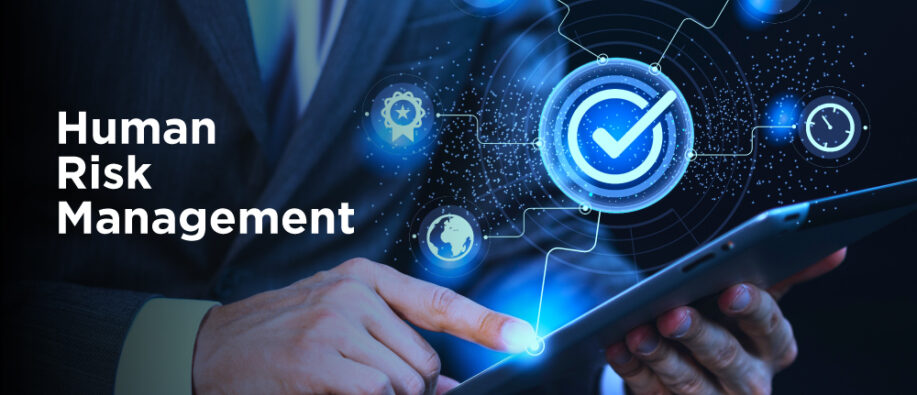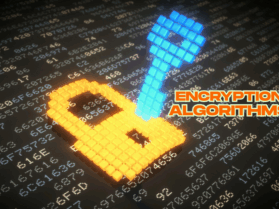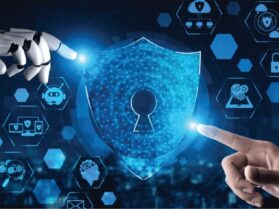We can't deny the fact that in today's world we highly rely on technology for managing our work, whether it is concerned with our personal lives or any business process. This increased dependency on technology is what is giving rise to cyberattacks. As we connect more devices and systems, hackers are developing new methods of hacking the weakest link that could be seen in cybersecurity, for which, rather than technology, humans are more responsible.
This is where human risk management comes in, which is not concerned with the right firewall, software, or any kind of encryption, but rather it deals with the systems and understanding of the risks and knowing what to protect. Because the threats evolve, businesses focus their security efforts on human behavior. In this blog post, we will describe why human risk management is relevant and how that relates to the future of cybersecurity.
What is Human Risk Management?
In simple words, human risk management means identifying, assessing, and then reducing the risk generated due to human behavior. In cybersecurity, it would explain how employees may harm the system knowingly or unknowingly. For instance, it may include clicking phishing emails, using weak passwords, or failing to adhere to some security protocols.
Cybercriminals target humans rather than trying to breach computer systems as they realize humans are easily manipulative. Human risk management identifies these risks and reduces the chances of people committing costly errors that could lead to security breaches.
Why Has Human Risk Management Become Important Now?
Cybercriminals are continuously discovering new ways to exploit technology. For example, numerous cybersecurity breaches are a result of errors made by humans. According to a published report, over 95% of cyberattacks occur due to human mistakes. This involves a list of actions, such as how employees get caught in phishing scams, use passwords to multiple accounts, or expose sensitive data on public platforms.
Such mistakes result in severe impact on businesses. Data breaches steal information, financial loss, reputational damage, and regulatory penalties. Cybercriminals target human mistakes, and thus, human risk management is more important than ever.
Intentional insider threats are another significant cybersecurity concern from the perspective of efficient human risk management. Such incidents occur when someone within an organization intentionally tries to expose its confidential data for biased purposes. Therefore, while sustaining robust human risk management, businesses need to be prepared to address insider threats as well.
Today, remote work has become very common, and employees access sensitive information on various devices while operating remotely. Such a method increases the chances of data breaches. A single mistake by an employee can result in a mass attack on a large scale. Hence, businesses need to understand that their strategy for security must highlight human behavior.
How Training Contributes to Managing Human Risk?
Human risk management is doubtlessly an urgent requirement and by following a few common tactics, one can manage human risk:

Primary Method:
- Training is the most prominent way to manage human risk.
Employee Education:
- Organizations must educate employees about digital risks.
- Training goes beyond instructing not to click on suspicious emails.
- It includes awareness of various threats, password management, and understanding the consequences of actions.
Continuous Training:
- Training should be ongoing due to the evolving nature of cyber threats.
- A one-day training program is insufficient for long-term security.
- Frequent updates and training sessions are necessary.
Simulated Attacks:
- Conducting simulated attacks (e.g., phishing exercises) helps keep employees alert to emerging risks.
Building a Security Culture:
- Security training helps establish a safe organizational culture.
- Clear communication from leadership to all employees about protecting sensitive data is crucial.
Encouraging Communication:
- Promote open discussions about security issues.
- Empower employees to report suspicious activities to foster a collective security culture.
Cybersecurity Tools Alone Aren't Enough!
While cybersecurity tools hold significance, they are powerless against human mistakes. Firewalls, antivirus software, multi-factor authentication, and encryption all serve important roles in an overall security plan. However, they do not control how people act.
For example, there is an employee who accidentally clicks on a phishing link. Because of that one click, all the security measures in place can be useless. This usually happens because the employee hasn’t been trained to recognize phishing scams or other harmful attempts.
This is why organizations have to depend on a multilayered approach that combines both technologies and human behavior. Cybersecurity tools are called for to offer greater protection, but human risk management strategies should be developed, making employees aware and prepared to act on potential threats.
The Future of Human-Centered Approach in Cybersecurity
Cybersecurity will focus more on human-centered security as we advance further. Businesses ought to have security incorporated into employees' mindsets and daily operations. That means realizing that the weakest link in any form of security is typically accomplished by humans and taking proactive measures against that.
In the future, companies will invest much more in behavior analytics to monitor actions of employees and immediately detect unusual or risky behavior. For instance, an employee who does not usually access sensitive information suddenly starts accessing it, and that might trigger an alert, which then gives the company enough time to intervene before a breach occurs.
During the same period, artificial intelligence will continue to play a more important role in cyber security. AI can help predict and identify potential threats much faster than human analysts can. However, just like all other AI systems, human oversight is also necessary. People will be required to interpret results from AI tools and decide accordingly based on the data.
In addition to technology, collaboration will be more crucial. Cybersecurity cannot be something that just the IT departments address alone. It needs to be addressed by all departments as well as levels in an organization. All must have a vested interest in an environment being secure.
Summing Up!
Human risk management is not a new concept, and it carries remarkable importance presently. Continuous improvement in cyberattacks based on human behavior is something that organizations have to anticipate. Companies should invest more in employee training and develop a security culture as well as integrate human risk management into all other means used to fight cyberattacks.
Cybersecurity in the future will be an advanced technology, and it is important to know how it equips people to identify and mitigate risks. A well-conceived human risk management would be crucial in the formation of a strong cybersecurity structure in the upcoming days.
To read more such informative blogs, please visit us at SecureITWorld!
Read More:- Cybersecurity in 2024: Emerging Trends and Strategies





